Saints of Lent - 2025

The Season of Lent is a wonderful time to reflect on the lives of the saints and how they came to answer God's call. Below you will find some of the saints whose feast days fall within the Lenten season. Click on any of the links to learn more.
March 6: Saint Colette
Born in France in 1381, St. Colette was a religious reformer and follower of Saint Francis of Assisi, who founded 17 Franciscan convents and brought many others back to their original rule. [read more]
March 7: Saint Perpetua and Saint Felicity
Sts. Perpetua and Felicity were arrested and martyred for their belief in Christ, during the persecution of Emperor Septimius Severus. Perpetua was a young noblewoman and Felicity a slave, and at the time they were imprisoned, Perpetua was a new mother, and Felicity was eight months pregnant. Together, the two women supported each other in prison, both refusing to renounce their faith. [read more]
March 9: Saint Frances of Rome
St. Frances was known for her great charity during epidemics and civil war. She started a lay order of women attached to the Benedictines, called the Oblates of Mary. They pledged to offer themselves to God and serve the poor. [read more]
March 9: Saint Catherine of Bologna
Born to an aristocratic Italian family, St. Catherine felt called to religious life at a young age. She became a member of the Poor Clares and helped to found a new order in Bologna. St. Catherine shared her faith through her art and writings. She also experienced spiritual visions, which led her to commit herself to prayer for the redemption of sinners. [read more]
March 16: Saint Abraham Kidunaia
St. Abraham was a hermit who lived in sixth-century Syria. Although he preferred time in solitude, the bishop sent him to Beth-Kiduna to evangelize a pagan town. At first, he was rejected and dragged away, but he continued to preach and persist, and eventually, the townspeople came to know Christ. [read more]
March 17: Saint Patrick
Although he is the patron saint of Ireland, Saint Patrick was actually born in Roman Britain in the fifth century. When he was a teenager, he was captured and enslaved by Irish raiders. He escaped after six years but, later, felt called to return to the Irish people to evangelize what was then a pagan country. [read more]
March 18: Saint Cyril of Jerusalem
St. Cyril lived at the time of the Arian heresy, which denied the divinity of Christ and threatened the Church. He got caught up in the conflict and spend 16 years in exile. His writings, especially those designed for new Catholics, are considered treasures of the Church. [read more]
March 19: Saint Joseph
St. Joseph, the husband of the Blessed Virgin Mary, is known for his faithfulness and humility, accepting the will of God even when he did not completely understand what was happening. Although the Gospels don't tell us a lot about Joseph, we know he was from the House of David and was a carpenter by trade. [read more]
March 20: Saint María Josefa of the Heart of Jesus
Felt called to care for the sick and elderly, St. María Josefa of the Heart of Jesus founded the Institute of the Servants of Jesus in Bilbao, Spain, in 1871. She felt it was the calling of the sisters to accompany the sick "until the door of eternity." [read more]
March 23: Saint Toribio of Mogrovejo
Born to a Spanish noble family, Saint Toribio was named Archbishop of Lima, Peru, in 1580. He traveled across the archdiocese visiting his people, often on foot and alone. He worked on reforming the clergy and wrote catechisms in native languages. He also helped the poor and defended the rights of the native people, and he founded the first seminary in the Americas. [read more]
March 26: Saint Margaret Clitherow
During the reign of Queen Elizabeth I, when Catholic Mass was outlawed in England, St. Margaret Clitherow hid priests in her home and secretly celebrated Mass there. She was eventually discovered and executed. [read more]
April 2: Saint Francis of Paola
Born in 1416 in southern Italy, St. Francis of Paola’s desire was to be the “least in the household of God.” He began living as a hermit while still a teenager and soon attracted followers, leading to the foundation of the Hermits of St. Francis of Assisi in 1474. He later renamed the order to the “Minimi” or “Minims,” meaning the least, signifying their commitment to humility. [read more]
April 4: Saint Isidore of Seville
Saint Isidore of Seville is considered one of the last early Church fathers. He is known for promoting education among clergy and for his belief that knowledge in all areas can be used in service to the Lord. For that reason, he is the patron saint of Internet users. [read more]
April 5: Saint Vincent Ferrer
Born in Valencia, Spain, Saint Vincent Ferrar was a noted preacher, who traveled throughout Europe converting many people. His preaching would draw huge crowds, and even though he only spoke Spanish, those who heard him preach are said to have been able to hear him in their native languages. [read more]
April 6: Saint Crescentia Hoess
Born in 1682, Crescentia was raised by a devout family and knew from a young age that she wanted to become a nun. Her family, however, could not afford the customary dowry, so she was initially turned away. Through the mayor's influence, she was admitted to the convent, where she was known for her wisdom and joyful spirit. [read more]
April 7: Saint John Baptist de La Salle
Saint John Baptist de La Salle felt called to help those who couldn’t afford to send their children to school. It led him to give up his family fortune, as well as a high position in the Church, to form a community known as the Brothers of the Christian Schools, dedicated to serving boys from poor families. Known for his innovative teaching methods, he is the patron saint of teachers. [read more]
April 8: Saint Julie Billiart
Saint Julie was born in 1751. At the age of 7, she had memorized the catechism and would “play teacher” with her friends as students. As a teenager, she was known for her virtue and piety and the villagers called her the “Saint of Cuvilly.” She worked in her father’s fields with the reapers and was fond of sitting on a haystack at lunchtime to teach them the faith. [read more]
April 11: Saint Gemma Galgani
Saint Gemma Galgani, a young Italian laywoman, was a stigmatist, someone who physically experiences the wounds of Christ – the stigmata. Gemma experienced visions and other mystical graces, but she led a simple life of prayer. [read more]
April 11: Saint Guthlac of Mercia
Saint Guthlac was a young man when he began to serve in the army of Mercia’s king. The army ravaged the countryside, stealing from the people. Guthlac became filled with remorse. He gave back much of what he had taken and turned to a life of solitude. He was known for his sanctity and gift of prophecy. [read more]
April 11: Saint Stanislaus of Sczepanów
Born in Sczepanów, Poland, in 1030, Saint Stanislaus was a gifted preacher who brought many to the faith and to a closer relationship with Christ. He was appointed Bishop of Kraków in 1072, but soon was condemned to death for speaking out against the injustices of the king. When soldiers refused to carry out the sentence, the king killed Stanislaus.
April 13: Saint Martin I, Pope & Martyr
Saint Martin I served as pope frrom 649 to 655. During this time, there was disagreement in the Church over the divine and human nature of Chrst, with many in the Eastern Church holding the view that Christ only had a divine will, not a human will. Pope Martin's work to defend the true faith put him in conflict with the Byzantine emperor and led to his imprisonment and death. [read more]









